#alpaca socks from peru
Explore tagged Tumblr posts
Text
The Timeless Charm of Wool Fabric
Wool fabric, derived from sheep and other animals, has woven its way through centuries of textile history, celebrated for its warmth, durability, and versatility. From ancient civilizations to modern applications, wool remains a staple in our wardrobes and homes.

Why Wool?
One of wool’s fabric most notable attributes is its natural insulation. This unique structure traps air, offering excellent thermal regulation. Whether you're battling cold weather or staying cool in warmer climates, wool’s moisture-wicking capabilities ensure you remain dry and comfortable.
Global Wool Production
Australia leads the world with 25% of wool production, followed by the U.S. and China with 18%, and New Zealand at 11%. This global industry highlights wool's enduring importance.
A Rich History
Wool's use dates back to around 6000 BCE. Domesticated sheep provided wool, meat, and milk, becoming vital to early human societies. By the Roman Empire, wool was a key textile, and during the Middle Ages, it was central to European life and economy. By 1200 AD, Italy's wool production was thriving, underlining wool's significance through the ages.
Diverse Applications
Wool’s versatility shines across various domains:
Clothing: From tailored suits and outerwear to sweaters, knitwear, socks, and base layers, wool’s insulating and soft properties make it a favorite.
Home Textiles: Wool blankets, throws, rugs, and carpets are cherished for their warmth, coziness, and durability.
Performance and Outdoor Gear: Ideal for hiking socks, base layers, and jackets, wool regulates temperature and wicks moisture, with Merino wool particularly favored for its breathability and odor resistance.
Fashion and Accessories: Winter hats, scarves, gloves, and even some bags and shoes benefit from wool’s aesthetic and functional qualities.
Types of Wool
Merino Wool: Soft, fine, lightweight, and breathable, perfect for activewear and everyday garments.
Cashmere: Luxurious and expensive, sourced from the fine undercoat of cashmere goats, primarily in Mongolia, China, and India.
Alpaca Wool: Exceptionally soft, warm, and lightweight, favored in high-end textiles and fashion.
Virgin Wool: Also known as lamb’s wool, from the lamb’s first shearing, prized for its softness, durability, and insulation.
Vicuna Wool: Exclusive to Peru, known for its exceptional softness, warmth, and lightweight properties.
Llama Wool: Luxuriously soft and warm, ideal for outerwear garments, from the Andes mountains of South America.
Final Thoughts
Wool’s journey from ancient times to modern applications showcases its timeless appeal and unmatched versatility. Whether in clothing, home decor, or performance gear, wool continues to be a beloved fabric that offers comfort, style, and practicality.
1 note
·
View note
Photo

st albans alpaca throw rug alpaca farm uk alpaca wool blanket peru alpaca wool balls alpaca teddy bears york
#alpaca sweaters cusco peru#alpaca wool uk chunky#alpaca pillow review#alpaca socks from peru#alpaca blankets uk
1 note
·
View note
Text
Merry Christmas to those who celebrate! And happy Sunday-hopefully-a-three-day-weekend to those who don’t.
Please forgive the janky photo but it is nearly 3am here and I am Secret Santa Sneaky putting up the stockings, hung by the gas fireplace with some faint suggestion of care.
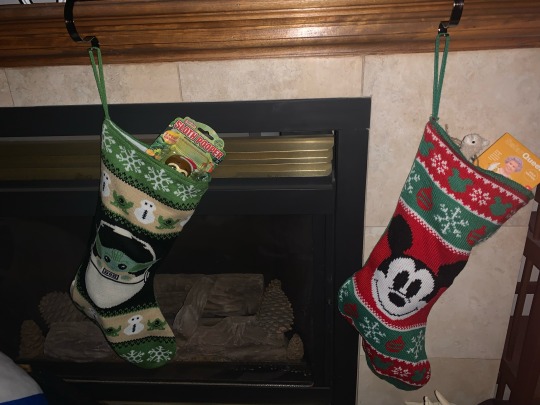
The amusing thing is that these stockings are mostly filled with things that Mum and I bought together, in person, almost a month ago, while getting the traditional holiday panetón at Cost Plus World Market. (They have the best flavor options!)
We also picked up a few fun trinkets while we were there. Mum has a solar powered waving Queen Elizabeth that she got years ago when living in England. It sits on the windowsill of the kitchen, and because we live in such a sunny place, I’ve grown accustomed to the click-click as her hand swivels back and forth.
Anyway, Mum’s version is basic blue. But we found this one at World Market that is gold! So fancy! So now we can have dueling waving queens.
We also saw a candy dispenser that is shaped like a sloth and poops out the candies. How can anyone resist that, especially since a major highlight of the family trip to Peru last summer was holding a baby sloth. We had a coupon for a free ornament so we also got an alpaca in honor of that trip, too, which is peeking out of Mum’s stocking.
The bulk of the stocking is candy and fuzzy socks (that will genuinely be a surprise, since this was something I bought on my own and Mum has no idea about them!). Oh, and dog butt magnets because we can always use more magnets, right? Plus, dog butts, heh.
Anyway, we’ve been joking around for the last month that we’re not really going to do much for Christmas. Splurge on a fancy-ish meal that will provide plenty of leftovers, and relax with lots of holiday movies. No family. No travel. No gift exchange.
We have a couple of big trips planned next year which is our main gift to each other (and they are Disney-adjacent, hence my crass capitalist choice in sock ware). Although, tbh, the biggest gift we can give to each other is finally feeling like we’re in a place of stability, something we haven’t had for over three years.
ANYWAY. Mum surprised me 3 years ago with a few things when we said “no gifts.” Then 2 years ago I surprised her with some inexpensive but thoughtful items (that had been purchased before we said, “no gifts,” which we eventually did say once I was laid off the Monday after Thanksgiving). Then last year, we agreed that yep, this time we really meant it, “no gifts” — and there was a small stocking with some treats in it on my chair come Christmas morning.
Then this year we said “no gifts” yet bought some fun little dumb things while out on our one true “Christmas outing” we had all year — we’re frugal enough, doggone it, and can enjoy the occasional pointless, frivolous trinket.
So it’s silly, putting things we already know about in a stocking. But I still got some glee at making sure I squirreled away the shopping bag we promised not to touch until Christmas, then stopping at Target on my way home from a work thing and giggling over the ridiculous stocking choices, and buying fuzzy Christmas socks on sale that I know Mum will enjoy, even if she only wears them once.
Oh, yeah, and we never got around to decorating because we just didn’t want to deal with sorting out the holiday boxes (that we’ve been meaning to organize and pare down, once our households merged, yet we still… haven’t…). So this is the only touch of “Christmas” you’ll see at the house.
But I have the whole week off, and we shall indulge our whims with food we don’t normally eat, attempt to assemble an Eiffel Tower gingerbread house (also purchased at World Market, because seriously we don’t get out much at all any more), and watch a random sampling of excellent and terrible holiday movies from various streaming services.
This is the first Christmas in years I haven’t felt vaguely (or majorly) depressed and anxious, focusing all my energy on simply surviving — and I choose to relish it, silly stockings and all.
#listen I am but a basic bitch who loves that damn green baby muppet#anyway#merry Christmas#happy holidays#chag sameach#yuletide greetings#festivus for the rest of y’all#do whatever you gotta do to get through#it’ll be worth it in the end#probably#(can you insert the ‘read more’ break on mobile? I’m so out of touch - and a touch wordy)#I hope y’all have missed my babbling about mundane aspects of my life
5 notes
·
View notes
Text
March 2022 Early Preview
It’s time for a sneak peek of March’s yarns! Our theme for this month is Metropolis.
A city rises between the desert and turquoise seas; the faded chalk colors of stucco create channels for the busy passerby.

Important to remember: Color Vibes are BACK! The option to swap your color vibe is only open between February 15-28 for the March 2022 crates.
Knit & Crochet Club
This month, enjoy a specially curated gradient set in the color vibe of your choice. These beautiful colorways appear on the classic Knitologie Worsted, a 100% Superwash Merino worsted weight yarn that's made in Peru exclusively for KnitCrate. Your crate will come four different colors that together form a gentle gradient. Each individual skein is 112 yds/102 m, totaling 448 yards (409 m)/200g over the four skeins in your crate.
Energize Me: Sunset
Rosy pinks appear, highlighting the bottoms of fluffy clouds as the sun sinks below the horizon line, another day ended. Cheer from the balcony of a high rise as you watch it unfold in this glorious gradient set.
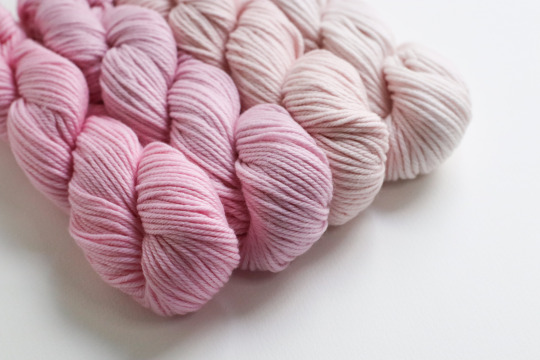
Chill Out: Skies
From mirrored, windowed walls to the skies they scrape--imagine the most beautiful turquoise skies reflected on urban architecture with this set of stunning blue skeins.

All Natural: Dune
Stone and cement, sand and stucco: nature's subtle neutrals unite for this taupe to gray gradient with green and blue undertones.

Fabric Swatches
This month, we’ll show you how the yarn looks when worked up into swatches so you can have an idea of what your projects might look like.

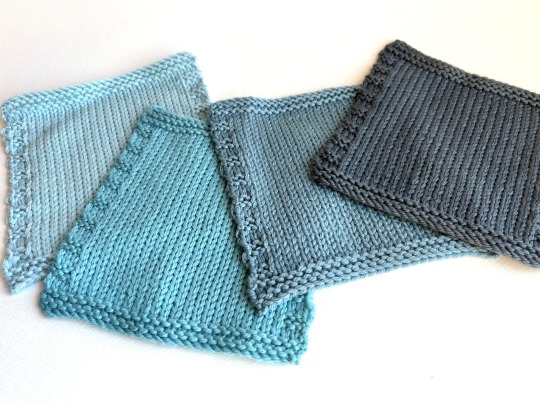
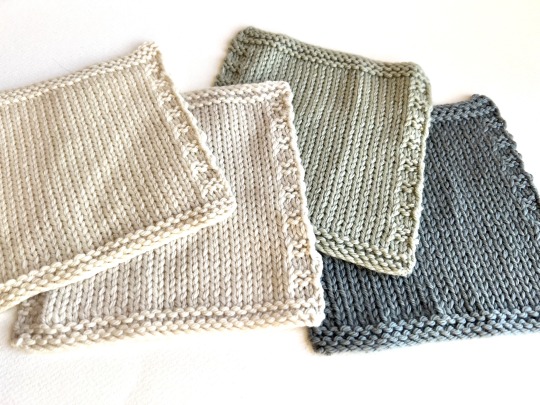
Not a member yet? Join today!
Sock Knit & Crochet Club
This month's featured sock yarn is the cozy La Brebis Warmer. True to its name, this toasty warm yarn is a mix of 70% Superwash Merino, 20% Suri Alpaca, and 10% Nylon. You will receive one 400 yards (366 m)/100g skein of fingering weight yarn in the color vibe of your choice.
Energize Me: Lace Up
This soft shade is a whispering breath of baby pink, like petals of the softest rose.
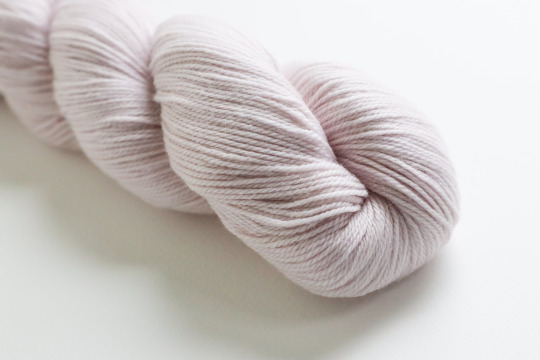
Chill Out and All Natural: Pavers
How about a little heather? Capture the steely skeleton of skyward arching monoliths with this silvery gray, streaked with a bit of white.
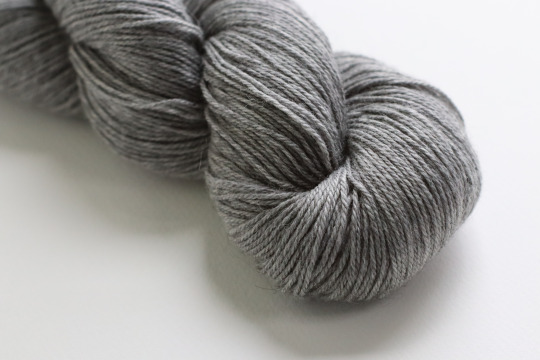
Fabric Swatches
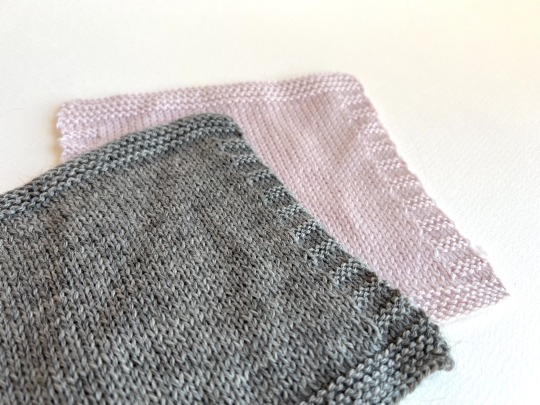
Not a member yet? Join today!
#knit#knitting#knitter#knitters#crochet#crocheting#crocheter#crocheters#knittersgottaknit#knittersoftumblr#knitterslife#knittersofravelry#knittersoftheworld#crochetersgottacrochet#crochetersoftumblr#crocheterslife#crochetersofravelry#crochetersoftheworld#yarn#yarnhaul#yarnsub#yarnclub#yarnsubscription#knitcrate
12 notes
·
View notes
Text
Trekking the Lares Trail in Peru’s Andes
Directly under the equatorial sun, hot air rises and drifts from the Amazonian jungle, carrying an endless supply of moisture. The water-laden clouds waft up and over the Andes Mountains and unload heavy rain, drenching the volcanic peaks, steep mountainsides and deep valleys; generously soaking me too. The trail under my muddy hiking boots—one of thousands used by the Incas—is rough with granite rocks and it meanders between enormous boulders. Everywhere the ground is peppered in llama and alpaca droppings. In places the rocks are piled up in protective walls around small potato fields which are saturated by the rain and fertilized thanks to the livestock. Eking out a living at this altitude are the resilient descendants of the Incas, Quechuan speaking farmers. When the Spanish arrived hundreds of years ago, the Inca fled into the high Andes where they managed to survive growing potatoes and herding llamas. Today they still wear traditional dress, layers of woven and knitted sweaters; women in hats and thick skirts with knitted leg warmers, men in red woven ponchos easily noticed from afar, glints of bright color amid cloud.
It is too wet to sit on the grass by our tents. I stand shivering on a huge boulder and turning from one side to the other, I look at the lay of the land, the moody mountains shrouded in mist and the rocky valleys. Three girls in their indigenous dress play behind me on the rock, whispering secrets to each other, too shy to look in my direction. I am deep in thought, imagining the steps my husband took in these same mountains, forty years ago when he also visited Peru, long before these girls or their parents were born. Retracing his steps to Maccu Picchu is what motivated me to sign up for this three-day hike, to endure the challenge of high altitude hiking in cold rain with a group of people less than half my age.
The two smallest girls catch me by surprise with their Quechuan equivalent of “Boo”. I am not expecting it, and nearly fall off the boulder in fright, but it’s a universal game, the rules well known, and I have to reciprocate. I slowly pull out my plastic rain poncho with both hands, growl fiercely pretending to be a monster, and try to catch them under the crinkling plastic. Like little mountain goats, they dart away, jump from rock to rock, shriek with laughter, and evade capture. They wear several woolen garments under colorful cardigans, full skirts, warm legwarmers and hats, but open-toed plastic sandals. I point to their feet and ask in sign language if their feet are cold. Mine are frozen despite wearing two pairs of socks and hiking boots. They laugh. I move closer and touch their mud caked toes. Impossibly they are warm.
It all seems impossible. Miles to my west, two enormous tectonic plates meet at the eastern Pacific seabed. Moving east, the Nazca plate, compressed under the weight of the ocean is denser and thinner than the west-moving continental South American plate. Both move slowly but forcefully enough to create a deep offshore trench at the collision site. This abysmal scar provides a cold upwelling of nutrients for marine life. (Changes in temperature and associated fish catch alerted Peruvian fishermen to the “El Nino” cycle decades ago.) Nazca loses in the ongoing, shuddering tectonic battle and is subducted under the buoyant South American plate, consumed deep into earth’s mantle. The journey down is turbulent, hot with friction, and Nazca crust melts into magma chambers, reservoirs of molten rock. Periodically this bursts to the surface, volcanoes erupt and the Andes take form. The long mountain range, offset and parallel to the boundaries of two colliding plates and to the oceanic trench, stands here magnificently, a consequence of gradual movement of plates, unnoticeable, under the little girls’ impossibly warm feet.
A few days later I watch the clouds of mist over the remarkable Maccu Picchu ruins. One minute the Inca citadel is entirely obscured from view and the next, the mist disperses to reveal the Inca citadel, like a curtain being opened and closed, teasing us with glimpses of ancient stone terraces, spaced regularly up the mountainside, temples and walls. When the last of the clouds pass and Machu Picchu is clearly visible in all its expansive glory, visitors’ minds gasp trying to appreciate the decades of hard work, clearing the land, cutting stone into blocks for precision fitting, moving rocks, and constructing the carefully designed, beautiful city cradled high among mountain peaks in thin air, towering above sacred valleys and thundering rivers.
-Andrea Ehrgott, March 2020
2 notes
·
View notes
Photo

alpaca farm isle of wight alpaca annie reviews alpaca wool uk chunky alpaca core spun rug yarn alpaca farm for sale australia
#alpaca socks from peru#alpaca grinder ebay#alpaca yarn for sale uk#alpaca socks amazon#alpacas free to good home
0 notes
Photo

alpaca scarf pin brooch alpaca grinder alpaca grinder cost alpaca farm manchester uk alpaca facts australia alpaca annie raincoats alpaca scarf canada alpaca teddy bears australiaalpaca wool for sale canada alpacasso amuse free knitting patterns baby alpaca yarn alpacas for sale uk cheap alpaca wool for sale nsw alpaca wool hats alpaca wool blanket review alpaca wool prices ireland
#free crochet alpaca scarf patterns#alpaca teddy bear coat#alpaca socks from peru#alpaca facts australia#alpaca annie raincoats
0 notes
Photo

alpaca grinder cost alpaca coat womens alpaca annie reviews alpaca rugs for sale uk alpaca farm manchester uk wholesale alpaca socks peru alpaca hats and scarves free knitting patterns baby alpaca yarnalpacasso amuse alpaca wool blanket review alpaca grinder alpaca socks from peru alpaca for sale kentucky alpaca wool for sale canada alpaca wool mens sweaters alpaca wool hats
#alpaca grinder cost#alpaca for sale kentucky#alpaca coat womens#alpaca annie raincoats#alpaca socks from peru
0 notes
Text
Arequipa
Arequipa is the second largest city in Peru and I known as the “white city” due to the white rock most of the buildings are made from. It’s a very clean city that’s in between the mountains and the ocean. It’s also located in a very volcanic area with 3 large volcanoes visible from the city center.


When we arrived we first joined a free walking tour. Our guide showed us around the city and took us to some neat art areas.
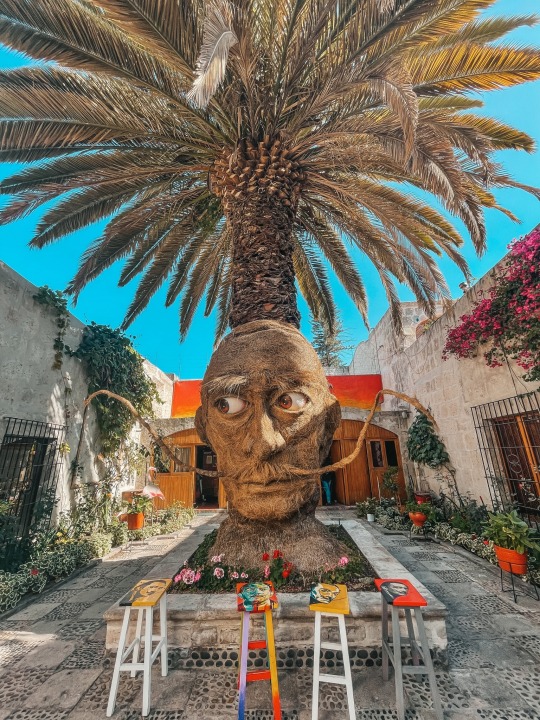

We also walked over to an alpaca/llama factory where we got to see the different stages of production. Starting with the animals themselves then moving to the different types of fur/wool and then seeing the traditional weaving in action. We finished with walking through a store of the final products; scarves, sweaters, jackets, socks etc… We’ve been on similar tours but I really liked this one because we could touch and see each stage in action.


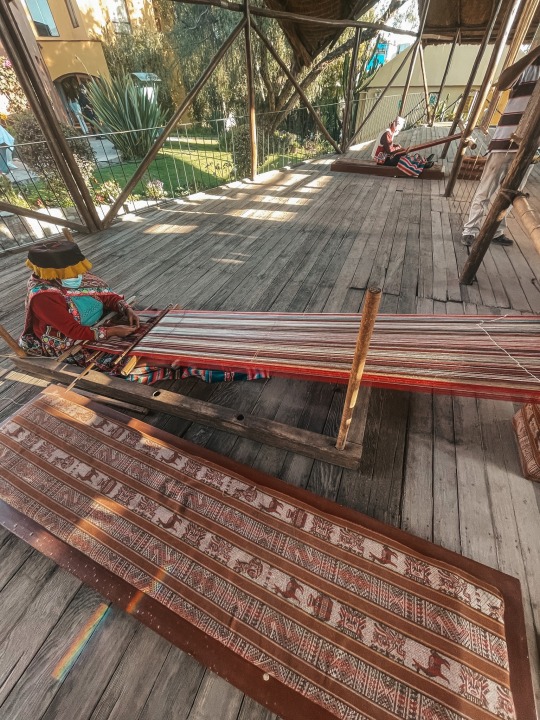
The walking tour was better than a lot of the other tours we’ve been on because our guide was super engaging. He even had us try different local drinks and ice cream. He was super animated and gave us a good feel for Arequipa.
0 notes
Text
Alpaca Fiber and Its Uniqueness
Alpacas are the chief homegrown creatures that occupy the nation of Peru. The Moche individuals who involve the Peruvian wide open have for quite a while trained the alpaca and these creatures are generally to be discovered touching in the southern piece of the Peruvian scene, around 3500 to 5000 meters over the ocean level. These days the alpaca is generally safeguarded in the nation of Peru and one of the vital explanations for this is the fiber which is gotten structure the alpacas. It is realized that the alpaca fiber is accessible in Peru in upwards of 52 common tones and it is of huge worth in the material business. One of the significant attributes of the alpaca fiber is its hypoallergic quality and regarding surface it is amazingly smooth and sleek, light in weight and warm also. It was in Peru that the Amerindians utilized the alpaca fiber in making various types of pieces of clothing at first and it is just lately that it has arisen as a beneficial business item and different things produced using this alpaca fiber like rain coats, sweaters, gloves, covers and socks are sold on the planet market.

Alpacas are normally white in shading however there are different other hued alpacas likewise accessible like in tans and grovel colors. It is this white shaded alpaca fiber which is essentially popular particularly in South America. As far as quality the alpaca fiber is very smooth and glossy and its fineness is of significant assistance to the spinners who think that it’s simple to make a yarn and weave or sew through it. In the event of getting the downy structure the alpacas it is important to recollect that the entire measure of wool got isn't really of brilliant quality and consequently the 'watch hair' controlled by the alpacas are to be eliminated before any type of turning.
Alpacas are principally of two sorts and hence the nature of fiber extricated from them is additionally unique. The Suri alpaca is very much protected for the non-abrasiveness and plush nature of its downy and it involves about 20% of the all-out alpaca populace. Then again, the fiber delivered by the Huacaya alpaca is very thick and delicate. The alpaca fiber may get thicker on the off chance that the creature is presented to over nourishment. Comfortable clothing made structure alpacas fibers are sought after among outside sport buffs and its light weight and warmth are ideal for this reason.
0 notes
Text
Llamas Vs Alpacas: Interesting Differences You Should Know
Humans have been using alpacas and llamas, much like camels, for several thousand years. Both species have helped us to travel to distant lands. Their wooly fur is used to make coats and different garment products. But because they are so alike, someone who doesn’t have any prior knowledge of the two won’t be able to tell them apart. Today, we’re here to help you differentiate between Llamas Vs Alpacas with some major points.
They can be found in South America, primarily in Bolivia and Peru. But with the advancement of agriculture, they are farmed in many parts of the world. Alpacas and Llamas are part of the camel family, named Camelidae. There are two other species of the same family called Guanaco and Vicuna. Interbreeding among all the four species is possible. The offspring of such interbreeding is known to be fertile.
The main differences are in their physical characteristics. Almost all South American farmers can differentiate between the two. But for us, we need to learn about them first. Llamas vs alpacas are used for different purposes. But first, let’s get to know them better.

Major Differences: Llamas Vs Alpacas
The noticeable differences between llama and alpaca are in their size, ears, face, personality, and purpose. Let’s go through them one by one and, in the end, see whether you can differentiate among them.
Dimensions
Alpacas are much smaller in size than the Llamas. Alpacas normally weigh between 130 to 160 pounds. On the other hand, llamas can weigh as much as four hundred pounds. While breeding and farming llamas or alpacas, farmers have to consider their size. Ranch sizes differ depending on which animal you want to have.
Alpacas are easier to handle because of their comparatively smaller size. Kids especially enjoy their company because Alpacas don’t necessarily show aggression, and even when they do, they can be controlled easily.
Llamas are adorable creatures as well. Depending on where you’re keeping them, the size can be a cause of concern. In America, many people in the suburbs get llamas as a pet. Although they aren’t ideal as pets, you can train them to listen to your commands.
No matter which animal you have, it’s better to get them trained first before they get close to children. Alpacas might not mean any harm, but sometimes they don’t know what they’re doing. Eventually, their movements might end up hurting someone.
The Ears
Compared to the alpacas, llamas have longer ears. Llama ears are almost banana-shaped. Whereas, alpaca ears are small and look like the short tip of a spear.
Right off the bat, by looking at the ears, you can tell llamas and alpacas apart. If you look at pictures of both the animals to understand their physical attribute, the first thing that will catch your eyes is probably the ears. And yes, llama ears do kind of look like a banana whereas, alpacas have ears that are short and pointy.
The Face
Another key differentiator between llamas and alpacas is their faces. Both their faces are different in size, structure, and shape.
Llama’s noses are longer compared to alpacas. Plus, llamas have a lot of fur over their entire face. Alpacas don’t have as much fur, and their nose is a bit blunt. Many people find alpacas cuter from a facial perspective.
Alpacas have a tired look about them, and kids love to pet them. Personality-wise the resemblance of alpacas with dogs is something that a lot of farmers use to their advantage to attract visitors to the alpaca ranches. Baby alpacas are so adorable that you wouldn’t be able to stop yourself from petting them.
This doesn’t mean llamas are mean looking. They are cute as well, in their unique way.
Fur
Alpacas have a really fine and soft coat of fur. The size of the fur is around eighteen to thirty microns. This makes the fur perfect for different garments. Alpaca’s fiber can be used to make socks, shawls, hats, and scurf.
On the other hand, the llama has coarser hair fiber. The fur has a length of 55-65 microns. But even though the length is good enough, the quality of the fur isn’t up to the mark for producing garments. Having said that, llama babies have similar fiber to alpacas. Baby llamas have soft and delicate fur, and the length is around 30 microns. Farmers can use either of the two to earn a healthy amount of money.
The color variations in alpaca’s fiber are much greater than llamas. As discussed earlier, llamas have lesser hair on their face and head than alpacas. This is one of the easiest ways to tell them apart.
Solely based on quality, alpacas have better fiber than llamas. So, if you’re planning to farm either of the two, you should go for alpacas, considering you can sell the fur to the garments industry.
Personality
Llamas are confident and independent animals. Even when they are threatened, llamas tend to stand their ground without being flustered. If you ever go to an alpaca ranch, you will see that farmers use llamas to guard their alpaca herd. Llamas and alpacas get along really well and have a friendly relationship. The llamas spend idle time in the ranch until their friend alpacas are in danger.
Llamas distance itself from the herd whenever there is a predator nearby to take it away from the alpaca herd. This mentality shows that they are willing to sacrifice themselves to save others.
On the other hand, the alpacas are shy. They prefer to roam in a herd as they are scared of predators. If alpacas feel threatened, they run away from the danger. That’s why llamas and alpacas complement one another.
Purpose
Historically, alpacas mainly served the purpose of providing fiber. For over five thousand years, we have bred and farmed alpacas to get their delicate fur. In Peru, alpacas have been bred for meat. The market has broadened now.
A lot of countries now breed alpacas for their meat. Many popular fashion brands use alpaca fiber, and slowly it is starting to become a go-to choice for various garment producers.
Llamas are used mainly for transportation and meat. As their fiber isn’t of the best quality, garment industries aren’t too keen on using their coat. Llamas are also used to protect farms. While some farms may use guard dogs, a lot of South American ranches use guard llamas. They might look cute, but their protective nature makes them perfectly suited for the job.
Trekking
Llamas are great companions for travelers. Whether you are trekking through the wilderness or climbing a hill or mountain, llamas can tag along with you. Traditionally they have been used for this exact purpose. Llamas can carry your equipment and gadgets. If the llama is big enough, it can carry you as well.
But alpacas can’t be used for hiking. They are comparatively smaller in size to the llamas. Naturally, they aren’t equipped to take on tough tasks because of their structure and built.
The Wild Cousins of Llamas and Alpacas
Vicuna and Guanaco are known as the wild cousins of the Cameloid family. They live in the wilderness, and because of their traits, these animals aren’t bred and farmed.
The Guanaco is bigger than an alpaca but smaller than an average llama. Studies say the Guanaco is the early ancestors of the llama that we see in the current times. The Vicuna, on the other hand, is a relative of the alpaca specie. Because they roam in the wild, at one point, they were listed as an endangered species.
They were in the risk of going extinct in many countries, but after the implementation of various regulations, the numbers have grown. Still, they are a threatened species, and most governments are trying to protect them.
The Guanaco is much heavier than the Vicuna. Vicunas have overall better fiber, and that’s why they get hunted so much in South America. Hunters and garment industries make a huge profit from their fiber. Just to put things into perspective, a vicuna fiber scarf retails for as much as $1300.
The product also includes a certificate that states the country of origin, which is stamped by the respective country’s approval stamp. No wonder they were on the verge of going extinct!
Protecting the Cameloid Family
As things stand, it is evident that all the species of the Cameloid family, including llamas, alpacas, guanacos, and vicunas, are of great importance to us. We have found ways to tame and breed llamas and alpacas. But the other two species remain in the wild.
To protect the Vicuna and Guanaco from going extinct, governments need to put strict laws in order. Otherwise, hunters and poachers will keep on killing them for fiber. Many animal research centers are trying to breed the Vicuna in an unnatural environment. Domesticating them could be a viable option to keep them safe.
Final Words
Llamas and Alpacas are adorable animals, and they are of great importance to us both financially and environmentally. Knowing the differences between the two should help you in identifying them.
The uniqueness of Llamas and Alpacas is what makes the two species truly special.
Llamas Vs Alpacas: Interesting Differences You Should Know was originally published on Holiday Nomad
Llamas Vs Alpacas: Interesting Differences You Should Know posted first on https://holidaynomad.com/
0 notes
Text
Llamas Vs Alpacas: Interesting Differences You Should Know
Humans have been using alpacas and llamas, much like camels, for several thousand years. Both species have helped us to travel to distant lands. Their wooly fur is used to make coats and different garment products. But because they are so alike, someone who doesn’t have any prior knowledge of the two won’t be able to tell them apart. Today, we're here to help you differentiate between Llamas Vs Alpacas with some major points.
They can be found in South America, primarily in Bolivia and Peru. But with the advancement of agriculture, they are farmed in many parts of the world. Alpacas and Llamas are part of the camel family, named Camelidae. There are two other species of the same family called Guanaco and Vicuna. Interbreeding among all the four species is possible. The offspring of such interbreeding is known to be fertile.
The main differences are in their physical characteristics. Almost all South American farmers can differentiate between the two. But for us, we need to learn about them first. Llamas vs alpacas are used for different purposes. But first, let’s get to know them better.

Major Differences: Llamas Vs Alpacas
The noticeable differences between llama and alpaca are in their size, ears, face, personality, and purpose. Let’s go through them one by one and, in the end, see whether you can differentiate among them.
Dimensions
Alpacas are much smaller in size than the Llamas. Alpacas normally weigh between 130 to 160 pounds. On the other hand, llamas can weigh as much as four hundred pounds. While breeding and farming llamas or alpacas, farmers have to consider their size. Ranch sizes differ depending on which animal you want to have.
Alpacas are easier to handle because of their comparatively smaller size. Kids especially enjoy their company because Alpacas don’t necessarily show aggression, and even when they do, they can be controlled easily.
Llamas are adorable creatures as well. Depending on where you’re keeping them, the size can be a cause of concern. In America, many people in the suburbs get llamas as a pet. Although they aren’t ideal as pets, you can train them to listen to your commands.
No matter which animal you have, it’s better to get them trained first before they get close to children. Alpacas might not mean any harm, but sometimes they don’t know what they’re doing. Eventually, their movements might end up hurting someone.
The Ears
Compared to the alpacas, llamas have longer ears. Llama ears are almost banana-shaped. Whereas, alpaca ears are small and look like the short tip of a spear.
Right off the bat, by looking at the ears, you can tell llamas and alpacas apart. If you look at pictures of both the animals to understand their physical attribute, the first thing that will catch your eyes is probably the ears. And yes, llama ears do kind of look like a banana whereas, alpacas have ears that are short and pointy.
The Face
Another key differentiator between llamas and alpacas is their faces. Both their faces are different in size, structure, and shape.
Llama’s noses are longer compared to alpacas. Plus, llamas have a lot of fur over their entire face. Alpacas don’t have as much fur, and their nose is a bit blunt. Many people find alpacas cuter from a facial perspective.
Alpacas have a tired look about them, and kids love to pet them. Personality-wise the resemblance of alpacas with dogs is something that a lot of farmers use to their advantage to attract visitors to the alpaca ranches. Baby alpacas are so adorable that you wouldn’t be able to stop yourself from petting them.
This doesn’t mean llamas are mean looking. They are cute as well, in their unique way.
Fur
Alpacas have a really fine and soft coat of fur. The size of the fur is around eighteen to thirty microns. This makes the fur perfect for different garments. Alpaca’s fiber can be used to make socks, shawls, hats, and scurf.
On the other hand, the llama has coarser hair fiber. The fur has a length of 55-65 microns. But even though the length is good enough, the quality of the fur isn’t up to the mark for producing garments. Having said that, llama babies have similar fiber to alpacas. Baby llamas have soft and delicate fur, and the length is around 30 microns. Farmers can use either of the two to earn a healthy amount of money.
The color variations in alpaca’s fiber are much greater than llamas. As discussed earlier, llamas have lesser hair on their face and head than alpacas. This is one of the easiest ways to tell them apart.
Solely based on quality, alpacas have better fiber than llamas. So, if you’re planning to farm either of the two, you should go for alpacas, considering you can sell the fur to the garments industry.
Personality
Llamas are confident and independent animals. Even when they are threatened, llamas tend to stand their ground without being flustered. If you ever go to an alpaca ranch, you will see that farmers use llamas to guard their alpaca herd. Llamas and alpacas get along really well and have a friendly relationship. The llamas spend idle time in the ranch until their friend alpacas are in danger.
Llamas distance itself from the herd whenever there is a predator nearby to take it away from the alpaca herd. This mentality shows that they are willing to sacrifice themselves to save others.
On the other hand, the alpacas are shy. They prefer to roam in a herd as they are scared of predators. If alpacas feel threatened, they run away from the danger. That’s why llamas and alpacas complement one another.
Purpose
Historically, alpacas mainly served the purpose of providing fiber. For over five thousand years, we have bred and farmed alpacas to get their delicate fur. In Peru, alpacas have been bred for meat. The market has broadened now.
A lot of countries now breed alpacas for their meat. Many popular fashion brands use alpaca fiber, and slowly it is starting to become a go-to choice for various garment producers.
Llamas are used mainly for transportation and meat. As their fiber isn’t of the best quality, garment industries aren’t too keen on using their coat. Llamas are also used to protect farms. While some farms may use guard dogs, a lot of South American ranches use guard llamas. They might look cute, but their protective nature makes them perfectly suited for the job.
Trekking
Llamas are great companions for travelers. Whether you are trekking through the wilderness or climbing a hill or mountain, llamas can tag along with you. Traditionally they have been used for this exact purpose. Llamas can carry your equipment and gadgets. If the llama is big enough, it can carry you as well.
But alpacas can’t be used for hiking. They are comparatively smaller in size to the llamas. Naturally, they aren’t equipped to take on tough tasks because of their structure and built.
The Wild Cousins of Llamas and Alpacas
Vicuna and Guanaco are known as the wild cousins of the Cameloid family. They live in the wilderness, and because of their traits, these animals aren’t bred and farmed.
The Guanaco is bigger than an alpaca but smaller than an average llama. Studies say the Guanaco is the early ancestors of the llama that we see in the current times. The Vicuna, on the other hand, is a relative of the alpaca specie. Because they roam in the wild, at one point, they were listed as an endangered species.
They were in the risk of going extinct in many countries, but after the implementation of various regulations, the numbers have grown. Still, they are a threatened species, and most governments are trying to protect them.
The Guanaco is much heavier than the Vicuna. Vicunas have overall better fiber, and that’s why they get hunted so much in South America. Hunters and garment industries make a huge profit from their fiber. Just to put things into perspective, a vicuna fiber scarf retails for as much as $1300.
The product also includes a certificate that states the country of origin, which is stamped by the respective country’s approval stamp. No wonder they were on the verge of going extinct!
Protecting the Cameloid Family
As things stand, it is evident that all the species of the Cameloid family, including llamas, alpacas, guanacos, and vicunas, are of great importance to us. We have found ways to tame and breed llamas and alpacas. But the other two species remain in the wild.
To protect the Vicuna and Guanaco from going extinct, governments need to put strict laws in order. Otherwise, hunters and poachers will keep on killing them for fiber. Many animal research centers are trying to breed the Vicuna in an unnatural environment. Domesticating them could be a viable option to keep them safe.
Final Words
Llamas and Alpacas are adorable animals, and they are of great importance to us both financially and environmentally. Knowing the differences between the two should help you in identifying them.
The uniqueness of Llamas and Alpacas is what makes the two species truly special.
Llamas Vs Alpacas: Interesting Differences You Should Know was originally published on Holiday Nomad
Llamas Vs Alpacas: Interesting Differences You Should Know posted first on https://holidaynomad.com/
0 notes
Photo

alpaca grinder alpaca coat sale alpacas for sale uk preloved alpaca blanket alpacas free to good home
#alpaca wool pillow review#plymouth yarn baby alpaca grande knitting patterns#alpaca annie bed socks#alpaca farm dunchurch#alpaca socks from peru
0 notes
Text
Llamas Vs Alpacas: Interesting Differences You Should Know
Humans have been using alpacas and llamas, much like camels, for several thousand years. Both species have helped us to travel to distant lands. Their wooly fur is used to make coats and different garment products. But because they are so alike, someone who doesn’t have any prior knowledge of the two won’t be able to tell them apart. Today, we’re here to help you differentiate between Llamas Vs Alpacas with some major points.
They can be found in South America, primarily in Bolivia and Peru. But with the advancement of agriculture, they are farmed in many parts of the world. Alpacas and Llamas are part of the camel family, named Camelidae. There are two other species of the same family called Guanaco and Vicuna. Interbreeding among all the four species is possible. The offspring of such interbreeding is known to be fertile.
The main differences are in their physical characteristics. Almost all South American farmers can differentiate between the two. But for us, we need to learn about them first. Llamas vs alpacas are used for different purposes. But first, let’s get to know them better.

Major Differences: Llamas Vs Alpacas
The noticeable differences between llama and alpaca are in their size, ears, face, personality, and purpose. Let’s go through them one by one and, in the end, see whether you can differentiate among them.
Dimensions
Alpacas are much smaller in size than the Llamas. Alpacas normally weigh between 130 to 160 pounds. On the other hand, llamas can weigh as much as four hundred pounds. While breeding and farming llamas or alpacas, farmers have to consider their size. Ranch sizes differ depending on which animal you want to have.
Alpacas are easier to handle because of their comparatively smaller size. Kids especially enjoy their company because Alpacas don’t necessarily show aggression, and even when they do, they can be controlled easily.
Llamas are adorable creatures as well. Depending on where you’re keeping them, the size can be a cause of concern. In America, many people in the suburbs get llamas as a pet. Although they aren’t ideal as pets, you can train them to listen to your commands.
No matter which animal you have, it’s better to get them trained first before they get close to children. Alpacas might not mean any harm, but sometimes they don’t know what they’re doing. Eventually, their movements might end up hurting someone.
The Ears
Compared to the alpacas, llamas have longer ears. Llama ears are almost banana-shaped. Whereas, alpaca ears are small and look like the short tip of a spear.
Right off the bat, by looking at the ears, you can tell llamas and alpacas apart. If you look at pictures of both the animals to understand their physical attribute, the first thing that will catch your eyes is probably the ears. And yes, llama ears do kind of look like a banana whereas, alpacas have ears that are short and pointy.
The Face
Another key differentiator between llamas and alpacas is their faces. Both their faces are different in size, structure, and shape.
Llama’s noses are longer compared to alpacas. Plus, llamas have a lot of fur over their entire face. Alpacas don’t have as much fur, and their nose is a bit blunt. Many people find alpacas cuter from a facial perspective.
Alpacas have a tired look about them, and kids love to pet them. Personality-wise the resemblance of alpacas with dogs is something that a lot of farmers use to their advantage to attract visitors to the alpaca ranches. Baby alpacas are so adorable that you wouldn’t be able to stop yourself from petting them.
This doesn’t mean llamas are mean looking. They are cute as well, in their unique way.
Fur
Alpacas have a really fine and soft coat of fur. The size of the fur is around eighteen to thirty microns. This makes the fur perfect for different garments. Alpaca’s fiber can be used to make socks, shawls, hats, and scurf.
On the other hand, the llama has coarser hair fiber. The fur has a length of 55-65 microns. But even though the length is good enough, the quality of the fur isn’t up to the mark for producing garments. Having said that, llama babies have similar fiber to alpacas. Baby llamas have soft and delicate fur, and the length is around 30 microns. Farmers can use either of the two to earn a healthy amount of money.
The color variations in alpaca’s fiber are much greater than llamas. As discussed earlier, llamas have lesser hair on their face and head than alpacas. This is one of the easiest ways to tell them apart.
Solely based on quality, alpacas have better fiber than llamas. So, if you’re planning to farm either of the two, you should go for alpacas, considering you can sell the fur to the garments industry.
Personality
Llamas are confident and independent animals. Even when they are threatened, llamas tend to stand their ground without being flustered. If you ever go to an alpaca ranch, you will see that farmers use llamas to guard their alpaca herd. Llamas and alpacas get along really well and have a friendly relationship. The llamas spend idle time in the ranch until their friend alpacas are in danger.
Llamas distance itself from the herd whenever there is a predator nearby to take it away from the alpaca herd. This mentality shows that they are willing to sacrifice themselves to save others.
On the other hand, the alpacas are shy. They prefer to roam in a herd as they are scared of predators. If alpacas feel threatened, they run away from the danger. That’s why llamas and alpacas complement one another.
Purpose
Historically, alpacas mainly served the purpose of providing fiber. For over five thousand years, we have bred and farmed alpacas to get their delicate fur. In Peru, alpacas have been bred for meat. The market has broadened now.
A lot of countries now breed alpacas for their meat. Many popular fashion brands use alpaca fiber, and slowly it is starting to become a go-to choice for various garment producers.
Llamas are used mainly for transportation and meat. As their fiber isn’t of the best quality, garment industries aren’t too keen on using their coat. Llamas are also used to protect farms. While some farms may use guard dogs, a lot of South American ranches use guard llamas. They might look cute, but their protective nature makes them perfectly suited for the job.
Trekking
Llamas are great companions for travelers. Whether you are trekking through the wilderness or climbing a hill or mountain, llamas can tag along with you. Traditionally they have been used for this exact purpose. Llamas can carry your equipment and gadgets. If the llama is big enough, it can carry you as well.
But alpacas can’t be used for hiking. They are comparatively smaller in size to the llamas. Naturally, they aren’t equipped to take on tough tasks because of their structure and built.
The Wild Cousins of Llamas and Alpacas
Vicuna and Guanaco are known as the wild cousins of the Cameloid family. They live in the wilderness, and because of their traits, these animals aren’t bred and farmed.
The Guanaco is bigger than an alpaca but smaller than an average llama. Studies say the Guanaco is the early ancestors of the llama that we see in the current times. The Vicuna, on the other hand, is a relative of the alpaca specie. Because they roam in the wild, at one point, they were listed as an endangered species.
They were in the risk of going extinct in many countries, but after the implementation of various regulations, the numbers have grown. Still, they are a threatened species, and most governments are trying to protect them.
The Guanaco is much heavier than the Vicuna. Vicunas have overall better fiber, and that’s why they get hunted so much in South America. Hunters and garment industries make a huge profit from their fiber. Just to put things into perspective, a vicuna fiber scarf retails for as much as $1300.
The product also includes a certificate that states the country of origin, which is stamped by the respective country’s approval stamp. No wonder they were on the verge of going extinct!
Protecting the Cameloid Family
As things stand, it is evident that all the species of the Cameloid family, including llamas, alpacas, guanacos, and vicunas, are of great importance to us. We have found ways to tame and breed llamas and alpacas. But the other two species remain in the wild.
To protect the Vicuna and Guanaco from going extinct, governments need to put strict laws in order. Otherwise, hunters and poachers will keep on killing them for fiber. Many animal research centers are trying to breed the Vicuna in an unnatural environment. Domesticating them could be a viable option to keep them safe.
Final Words
Llamas and Alpacas are adorable animals, and they are of great importance to us both financially and environmentally. Knowing the differences between the two should help you in identifying them.
The uniqueness of Llamas and Alpacas is what makes the two species truly special.
Llamas Vs Alpacas: Interesting Differences You Should Know was originally published on Holiday Nomad
Llamas Vs Alpacas: Interesting Differences You Should Know posted first on https://holidaynomad.com/
0 notes
Text
Llamas Vs Alpacas: Interesting Differences You Should Know
Humans have been using alpacas and llamas, much like camels, for several thousand years. Both species have helped us to travel to distant lands. Their wooly fur is used to make coats and different garment products. But because they are so alike, someone who doesn’t have any prior knowledge of the two won’t be able to tell them apart. Today, we’re here to help you differentiate between Llamas Vs Alpacas with some major points.
They can be found in South America, primarily in Bolivia and Peru. But with the advancement of agriculture, they are farmed in many parts of the world. Alpacas and Llamas are part of the camel family, named Camelidae. There are two other species of the same family called Guanaco and Vicuna. Interbreeding among all the four species is possible. The offspring of such interbreeding is known to be fertile.
The main differences are in their physical characteristics. Almost all South American farmers can differentiate between the two. But for us, we need to learn about them first. Llamas vs alpacas are used for different purposes. But first, let’s get to know them better.

Major Differences: Llamas Vs Alpacas
The noticeable differences between llama and alpaca are in their size, ears, face, personality, and purpose. Let’s go through them one by one and, in the end, see whether you can differentiate among them.
Dimensions
Alpacas are much smaller in size than the Llamas. Alpacas normally weigh between 130 to 160 pounds. On the other hand, llamas can weigh as much as four hundred pounds. While breeding and farming llamas or alpacas, farmers have to consider their size. Ranch sizes differ depending on which animal you want to have.
Alpacas are easier to handle because of their comparatively smaller size. Kids especially enjoy their company because Alpacas don’t necessarily show aggression, and even when they do, they can be controlled easily.
Llamas are adorable creatures as well. Depending on where you’re keeping them, the size can be a cause of concern. In America, many people in the suburbs get llamas as a pet. Although they aren’t ideal as pets, you can train them to listen to your commands.
No matter which animal you have, it’s better to get them trained first before they get close to children. Alpacas might not mean any harm, but sometimes they don’t know what they’re doing. Eventually, their movements might end up hurting someone.
The Ears
Compared to the alpacas, llamas have longer ears. Llama ears are almost banana-shaped. Whereas, alpaca ears are small and look like the short tip of a spear.
Right off the bat, by looking at the ears, you can tell llamas and alpacas apart. If you look at pictures of both the animals to understand their physical attribute, the first thing that will catch your eyes is probably the ears. And yes, llama ears do kind of look like a banana whereas, alpacas have ears that are short and pointy.
The Face
Another key differentiator between llamas and alpacas is their faces. Both their faces are different in size, structure, and shape.
Llama’s noses are longer compared to alpacas. Plus, llamas have a lot of fur over their entire face. Alpacas don’t have as much fur, and their nose is a bit blunt. Many people find alpacas cuter from a facial perspective.
Alpacas have a tired look about them, and kids love to pet them. Personality-wise the resemblance of alpacas with dogs is something that a lot of farmers use to their advantage to attract visitors to the alpaca ranches. Baby alpacas are so adorable that you wouldn’t be able to stop yourself from petting them.
This doesn’t mean llamas are mean looking. They are cute as well, in their unique way.
Fur
Alpacas have a really fine and soft coat of fur. The size of the fur is around eighteen to thirty microns. This makes the fur perfect for different garments. Alpaca’s fiber can be used to make socks, shawls, hats, and scurf.
On the other hand, the llama has coarser hair fiber. The fur has a length of 55-65 microns. But even though the length is good enough, the quality of the fur isn’t up to the mark for producing garments. Having said that, llama babies have similar fiber to alpacas. Baby llamas have soft and delicate fur, and the length is around 30 microns. Farmers can use either of the two to earn a healthy amount of money.
The color variations in alpaca’s fiber are much greater than llamas. As discussed earlier, llamas have lesser hair on their face and head than alpacas. This is one of the easiest ways to tell them apart.
Solely based on quality, alpacas have better fiber than llamas. So, if you’re planning to farm either of the two, you should go for alpacas, considering you can sell the fur to the garments industry.
Personality
Llamas are confident and independent animals. Even when they are threatened, llamas tend to stand their ground without being flustered. If you ever go to an alpaca ranch, you will see that farmers use llamas to guard their alpaca herd. Llamas and alpacas get along really well and have a friendly relationship. The llamas spend idle time in the ranch until their friend alpacas are in danger.
Llamas distance itself from the herd whenever there is a predator nearby to take it away from the alpaca herd. This mentality shows that they are willing to sacrifice themselves to save others.
On the other hand, the alpacas are shy. They prefer to roam in a herd as they are scared of predators. If alpacas feel threatened, they run away from the danger. That’s why llamas and alpacas complement one another.
Purpose
Historically, alpacas mainly served the purpose of providing fiber. For over five thousand years, we have bred and farmed alpacas to get their delicate fur. In Peru, alpacas have been bred for meat. The market has broadened now.
A lot of countries now breed alpacas for their meat. Many popular fashion brands use alpaca fiber, and slowly it is starting to become a go-to choice for various garment producers.
Llamas are used mainly for transportation and meat. As their fiber isn’t of the best quality, garment industries aren’t too keen on using their coat. Llamas are also used to protect farms. While some farms may use guard dogs, a lot of South American ranches use guard llamas. They might look cute, but their protective nature makes them perfectly suited for the job.
Trekking
Llamas are great companions for travelers. Whether you are trekking through the wilderness or climbing a hill or mountain, llamas can tag along with you. Traditionally they have been used for this exact purpose. Llamas can carry your equipment and gadgets. If the llama is big enough, it can carry you as well.
But alpacas can’t be used for hiking. They are comparatively smaller in size to the llamas. Naturally, they aren’t equipped to take on tough tasks because of their structure and built.
The Wild Cousins of Llamas and Alpacas
Vicuna and Guanaco are known as the wild cousins of the Cameloid family. They live in the wilderness, and because of their traits, these animals aren’t bred and farmed.
The Guanaco is bigger than an alpaca but smaller than an average llama. Studies say the Guanaco is the early ancestors of the llama that we see in the current times. The Vicuna, on the other hand, is a relative of the alpaca specie. Because they roam in the wild, at one point, they were listed as an endangered species.
They were in the risk of going extinct in many countries, but after the implementation of various regulations, the numbers have grown. Still, they are a threatened species, and most governments are trying to protect them.
The Guanaco is much heavier than the Vicuna. Vicunas have overall better fiber, and that’s why they get hunted so much in South America. Hunters and garment industries make a huge profit from their fiber. Just to put things into perspective, a vicuna fiber scarf retails for as much as $1300.
The product also includes a certificate that states the country of origin, which is stamped by the respective country’s approval stamp. No wonder they were on the verge of going extinct!
Protecting the Cameloid Family
As things stand, it is evident that all the species of the Cameloid family, including llamas, alpacas, guanacos, and vicunas, are of great importance to us. We have found ways to tame and breed llamas and alpacas. But the other two species remain in the wild.
To protect the Vicuna and Guanaco from going extinct, governments need to put strict laws in order. Otherwise, hunters and poachers will keep on killing them for fiber. Many animal research centers are trying to breed the Vicuna in an unnatural environment. Domesticating them could be a viable option to keep them safe.
Final Words
Llamas and Alpacas are adorable animals, and they are of great importance to us both financially and environmentally. Knowing the differences between the two should help you in identifying them.
The uniqueness of Llamas and Alpacas is what makes the two species truly special.
The following blog post Llamas Vs Alpacas: Interesting Differences You Should Know is courtesy of Holiday Nomad
Llamas Vs Alpacas: Interesting Differences You Should Know published first on https://holidaynomad.com/
0 notes
Text
Llamas Vs Alpacas: Interesting Differences You Should Know
Humans have been using alpacas and llamas, much like camels, for several thousand years. Both species have helped us to travel to distant lands. Their wooly fur is used to make coats and different garment products. But because they are so alike, someone who doesn’t have any prior knowledge of the two won’t be able to tell them apart. Today, we're here to help you differentiate between Llamas Vs Alpacas with some major points.
They can be found in South America, primarily in Bolivia and Peru. But with the advancement of agriculture, they are farmed in many parts of the world. Alpacas and Llamas are part of the camel family, named Camelidae. There are two other species of the same family called Guanaco and Vicuna. Interbreeding among all the four species is possible. The offspring of such interbreeding is known to be fertile.
The main differences are in their physical characteristics. Almost all South American farmers can differentiate between the two. But for us, we need to learn about them first. Llamas vs alpacas are used for different purposes. But first, let’s get to know them better.
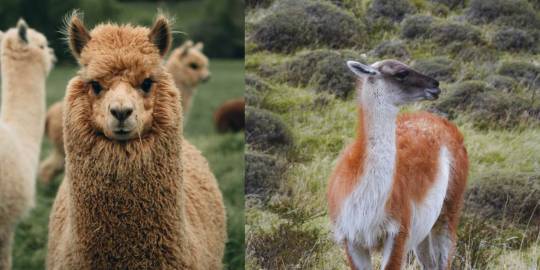
Major Differences: Llamas Vs Alpacas
The noticeable differences between llama and alpaca are in their size, ears, face, personality, and purpose. Let’s go through them one by one and, in the end, see whether you can differentiate among them.
Dimensions
Alpacas are much smaller in size than the Llamas. Alpacas normally weigh between 130 to 160 pounds. On the other hand, llamas can weigh as much as four hundred pounds. While breeding and farming llamas or alpacas, farmers have to consider their size. Ranch sizes differ depending on which animal you want to have.
Alpacas are easier to handle because of their comparatively smaller size. Kids especially enjoy their company because Alpacas don’t necessarily show aggression, and even when they do, they can be controlled easily.
Llamas are adorable creatures as well. Depending on where you’re keeping them, the size can be a cause of concern. In America, many people in the suburbs get llamas as a pet. Although they aren’t ideal as pets, you can train them to listen to your commands.
No matter which animal you have, it’s better to get them trained first before they get close to children. Alpacas might not mean any harm, but sometimes they don’t know what they’re doing. Eventually, their movements might end up hurting someone.
The Ears
Compared to the alpacas, llamas have longer ears. Llama ears are almost banana-shaped. Whereas, alpaca ears are small and look like the short tip of a spear.
Right off the bat, by looking at the ears, you can tell llamas and alpacas apart. If you look at pictures of both the animals to understand their physical attribute, the first thing that will catch your eyes is probably the ears. And yes, llama ears do kind of look like a banana whereas, alpacas have ears that are short and pointy.
The Face
Another key differentiator between llamas and alpacas is their faces. Both their faces are different in size, structure, and shape.
Llama’s noses are longer compared to alpacas. Plus, llamas have a lot of fur over their entire face. Alpacas don’t have as much fur, and their nose is a bit blunt. Many people find alpacas cuter from a facial perspective.
Alpacas have a tired look about them, and kids love to pet them. Personality-wise the resemblance of alpacas with dogs is something that a lot of farmers use to their advantage to attract visitors to the alpaca ranches. Baby alpacas are so adorable that you wouldn’t be able to stop yourself from petting them.
This doesn’t mean llamas are mean looking. They are cute as well, in their unique way.
Fur
Alpacas have a really fine and soft coat of fur. The size of the fur is around eighteen to thirty microns. This makes the fur perfect for different garments. Alpaca’s fiber can be used to make socks, shawls, hats, and scurf.
On the other hand, the llama has coarser hair fiber. The fur has a length of 55-65 microns. But even though the length is good enough, the quality of the fur isn’t up to the mark for producing garments. Having said that, llama babies have similar fiber to alpacas. Baby llamas have soft and delicate fur, and the length is around 30 microns. Farmers can use either of the two to earn a healthy amount of money.
The color variations in alpaca’s fiber are much greater than llamas. As discussed earlier, llamas have lesser hair on their face and head than alpacas. This is one of the easiest ways to tell them apart.
Solely based on quality, alpacas have better fiber than llamas. So, if you’re planning to farm either of the two, you should go for alpacas, considering you can sell the fur to the garments industry.
Personality
Llamas are confident and independent animals. Even when they are threatened, llamas tend to stand their ground without being flustered. If you ever go to an alpaca ranch, you will see that farmers use llamas to guard their alpaca herd. Llamas and alpacas get along really well and have a friendly relationship. The llamas spend idle time in the ranch until their friend alpacas are in danger.
Llamas distance itself from the herd whenever there is a predator nearby to take it away from the alpaca herd. This mentality shows that they are willing to sacrifice themselves to save others.
On the other hand, the alpacas are shy. They prefer to roam in a herd as they are scared of predators. If alpacas feel threatened, they run away from the danger. That’s why llamas and alpacas complement one another.
Purpose
Historically, alpacas mainly served the purpose of providing fiber. For over five thousand years, we have bred and farmed alpacas to get their delicate fur. In Peru, alpacas have been bred for meat. The market has broadened now.
A lot of countries now breed alpacas for their meat. Many popular fashion brands use alpaca fiber, and slowly it is starting to become a go-to choice for various garment producers.
Llamas are used mainly for transportation and meat. As their fiber isn’t of the best quality, garment industries aren’t too keen on using their coat. Llamas are also used to protect farms. While some farms may use guard dogs, a lot of South American ranches use guard llamas. They might look cute, but their protective nature makes them perfectly suited for the job.
Trekking
Llamas are great companions for travelers. Whether you are trekking through the wilderness or climbing a hill or mountain, llamas can tag along with you. Traditionally they have been used for this exact purpose. Llamas can carry your equipment and gadgets. If the llama is big enough, it can carry you as well.
But alpacas can’t be used for hiking. They are comparatively smaller in size to the llamas. Naturally, they aren’t equipped to take on tough tasks because of their structure and built.
The Wild Cousins of Llamas and Alpacas
Vicuna and Guanaco are known as the wild cousins of the Cameloid family. They live in the wilderness, and because of their traits, these animals aren’t bred and farmed.
The Guanaco is bigger than an alpaca but smaller than an average llama. Studies say the Guanaco is the early ancestors of the llama that we see in the current times. The Vicuna, on the other hand, is a relative of the alpaca specie. Because they roam in the wild, at one point, they were listed as an endangered species.
They were in the risk of going extinct in many countries, but after the implementation of various regulations, the numbers have grown. Still, they are a threatened species, and most governments are trying to protect them.
The Guanaco is much heavier than the Vicuna. Vicunas have overall better fiber, and that’s why they get hunted so much in South America. Hunters and garment industries make a huge profit from their fiber. Just to put things into perspective, a vicuna fiber scarf retails for as much as $1300.
The product also includes a certificate that states the country of origin, which is stamped by the respective country’s approval stamp. No wonder they were on the verge of going extinct!
Protecting the Cameloid Family
As things stand, it is evident that all the species of the Cameloid family, including llamas, alpacas, guanacos, and vicunas, are of great importance to us. We have found ways to tame and breed llamas and alpacas. But the other two species remain in the wild.
To protect the Vicuna and Guanaco from going extinct, governments need to put strict laws in order. Otherwise, hunters and poachers will keep on killing them for fiber. Many animal research centers are trying to breed the Vicuna in an unnatural environment. Domesticating them could be a viable option to keep them safe.
Final Words
Llamas and Alpacas are adorable animals, and they are of great importance to us both financially and environmentally. Knowing the differences between the two should help you in identifying them.
The uniqueness of Llamas and Alpacas is what makes the two species truly special.
Llamas Vs Alpacas: Interesting Differences You Should Know was originally published on Holiday Nomad
Llamas Vs Alpacas: Interesting Differences You Should Know posted first on https://holidaynomad.com/
0 notes